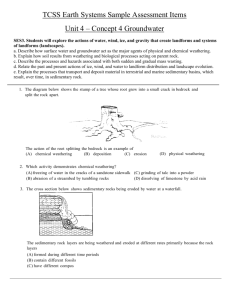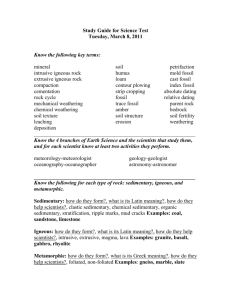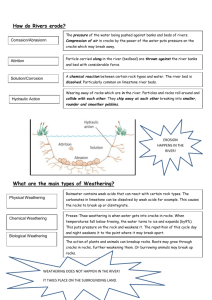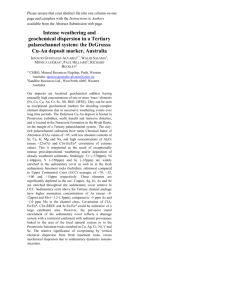File - Mrs. Ellis` Science Class!
advertisement
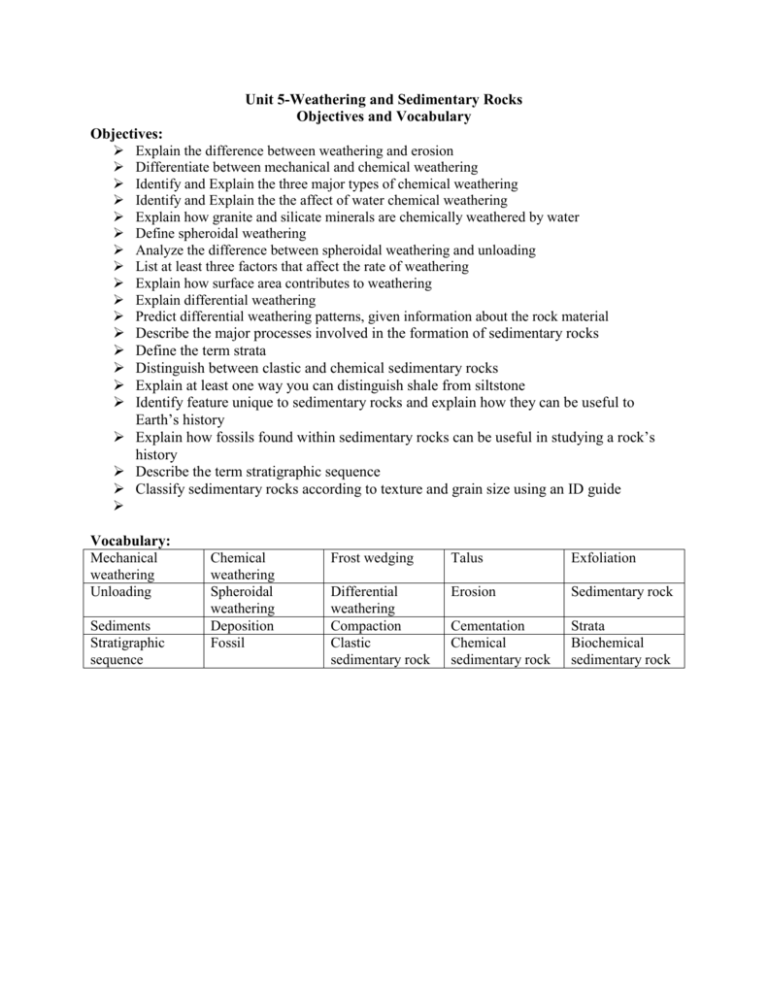
Unit 5-Weathering and Sedimentary Rocks Objectives and Vocabulary Objectives: Explain the difference between weathering and erosion Differentiate between mechanical and chemical weathering Identify and Explain the three major types of chemical weathering Identify and Explain the the affect of water chemical weathering Explain how granite and silicate minerals are chemically weathered by water Define spheroidal weathering Analyze the difference between spheroidal weathering and unloading List at least three factors that affect the rate of weathering Explain how surface area contributes to weathering Explain differential weathering Predict differential weathering patterns, given information about the rock material Describe the major processes involved in the formation of sedimentary rocks Define the term strata Distinguish between clastic and chemical sedimentary rocks Explain at least one way you can distinguish shale from siltstone Identify feature unique to sedimentary rocks and explain how they can be useful to Earth’s history Explain how fossils found within sedimentary rocks can be useful in studying a rock’s history Describe the term stratigraphic sequence Classify sedimentary rocks according to texture and grain size using an ID guide Vocabulary: Mechanical weathering Unloading Sediments Stratigraphic sequence Chemical weathering Spheroidal weathering Deposition Fossil Frost wedging Talus Exfoliation Differential weathering Compaction Clastic sedimentary rock Erosion Sedimentary rock Cementation Chemical sedimentary rock Strata Biochemical sedimentary rock




